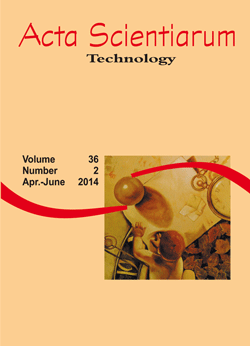<b>The effect of β-cyclodextrin in the photochemical stability of propranolol hydrochloride in aqueous solution<b>
DOI:
https://doi.org/10.4025/actascitechnol.v36i2.17554Palavras-chave:
nanocavity, drug, photochemicalResumo
The degradation of propranolol hydrochloride (1-isopropylamino-3-(naphthoxy)-2-propranolol) in an aqueous solution was analyzed when irradiated by light UV, with and without β-cyclodextrin. There was an increase in the compound´s photostability in nanocavity when compared with the drug without the cyclodextrins´ cavity. First order kinetic model was employed for the degradation of propranolol in aqueous media and in cyclodextrins´ cavity. The kinetic parameter was obtained by the drug´s absorption and electronic fluorescence. As a rule, encapsulation of propranolol in β-cyclodextrin decreases photodegradation speed by 53%.
Â
Downloads
Downloads
Publicado
Como Citar
Edição
Seção
Licença
DECLARAÇíO DE ORIGINALIDADE E DIREITOS AUTORAIS
Declaro que o presente artigo é original, não tendo sido submetido í publicação em qualquer outro periódico nacional ou internacional, quer seja em parte ou em sua totalidade.
Os direitos autorais pertencem exclusivamente aos autores. Os direitos de licenciamento utilizados pelo periódico é a licença Creative Commons Attribution 4.0 (CC BY 4.0): são permitidos o compartilhamento (cópia e distribuição do material em qualqer meio ou formato) e adaptação (remix, transformação e criação de material a partir do conteúdo assim licenciado para quaisquer fins, inclusive comerciais.
Recomenda-se a leitura desse link para maiores informações sobre o tema: fornecimento de créditos e referências de forma correta, entre outros detalhes cruciais para uso adequado do material licenciado.



















